Familiar with the term heirloom plants? Here’s a new one: ‘Orphan’ plants. These are ancient indigenous crops that have been largely ignored but are now being reintroduced.
If the term ‘orphan’ crops has piqued your interest, here’s the story.
In much earlier times, indigenous communities around the world grew these crops but they mostly fell away following the introduction of more commercially available varieties like tomatoes, potatoes, carrots and spinach.
So why look back? According to Jason Sampson from the University of Pretoria’s Future Africa Agrobiodiversity (and Orphan Crop) Collection, these orphan crops can form a vital part of sustainable food production for the future.
That’s because they were, and are, tough and easy to grow. Being subsistence farmers, the early cultivators could rely only on what was available to them (animal manure, rainfall) for their production. In other words, the beginnings of permaculture.
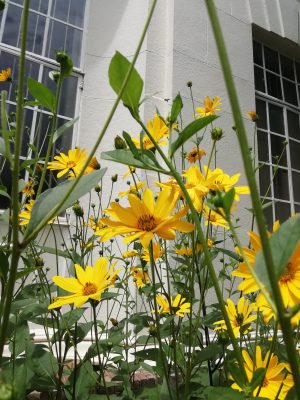
The University’s orphan crop collection is the only one of its kind, with some 200 orphan crops from around the world that are now grown under trial at the Future Africa campus in Pretoria.
Their vision is for these incredible edibles to be taken on board by anyone wanting to grow these water wise (mostly), disease resistant and very productive vegetables and herbs.
While these crops are not often available for retail sale to the public, these six summer crops can be found at Petal Faire nursery in Pretoria or ordered online.
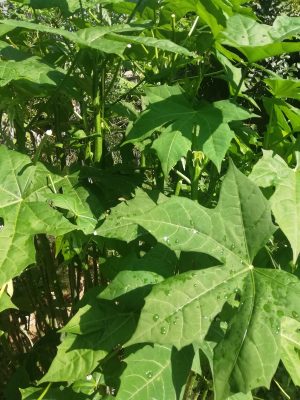
Mayan Tree Spinach (Chayamansa or chaya (Cnidoscolus aconitifolius) is fast growing and drought tolerant once established. The cooked green leaves are as tasty as spinach/Swiss chard yet provide far more protein, calcium, iron, vitamin C and carotenes.
Plant in full sun, in fertile soil and water regularly in summer. It roots from cuttings in summer but needs a few months to establish before harvesting. Keep plants 2m high or less for easy harvesting. It also grows well in a pot.
Plants are not frost tolerant and should be kept in a sheltered area in winter.
Chaya leaves should not be eaten raw or cooked in aluminium as the leaves contain a substance that makes them inedible when raw. Boil, sauté or stir fry the leaves for 5 – 10 minutes to produce a soft, yet meaty spinach flavour. The cooking water can be used as a tea or as a nutrient rich addition to soups, stews and stock.
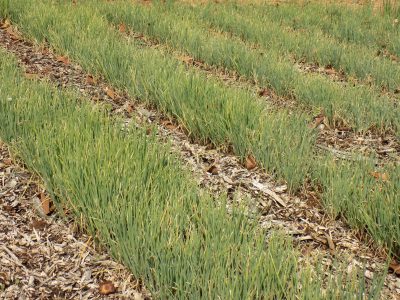
Zimbabwean shallot or Eveready onion (Allium cepa var. perutile) is a small, evergreen true onion that grows very fast and originates from Scotland. It is speculated that this onion was brought to Zimbabwe by missionaries. It makes clumps of small bulbs with a strong onion flavour topped with sweet-flavoured chive-like leaves.
Plant in full sun, in fertile soil that drains well. Water well until the plants are growing strongly. The onions quickly form clumps which can be split and planted out. Keep the soil consistently moist and feed regularly. They go dormant if allowed to dry out for too long, especially in summer.
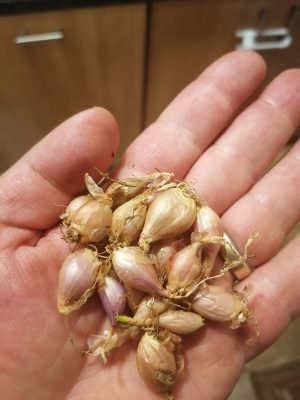
The bulbs have a strong onion flavour and can be used in cooking. The thin skin is easy to peel. Both the bulbs and leaves can be chopped and used raw in salads or as a garnish.
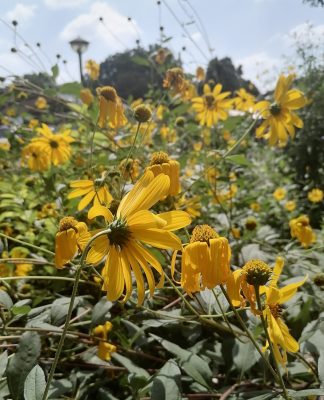
Canadian Truffle or Sunchoke/Jerusalem Artichoke (Helianthus tuberosus) is a low GI ‘ starchy’ vegetable that is a relative of the common sunflower and was planted by certain Native American people.
The yellow petals are edible and the bulbous tubers can be peeled and used as a crunchy addition to salad, boiled or roasted to release a delicious, sweet artichoke flavour.
Plant the tubers from mid-winter to early spring in full sun or dappled shade and keep plants consistently moist during their long growing season. Harvest when the plants die down in winter. The tubers can be left in the ground as they store best in cold soil.
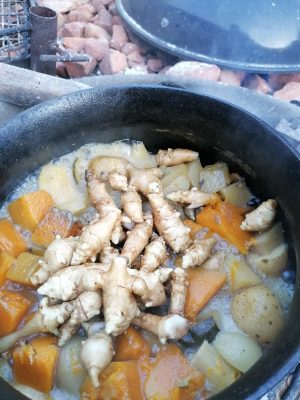
Add the tubers to stews and potjies, serve mashed or added to soups or roasted on their own or under the meat to absorb its juices as it cooks.
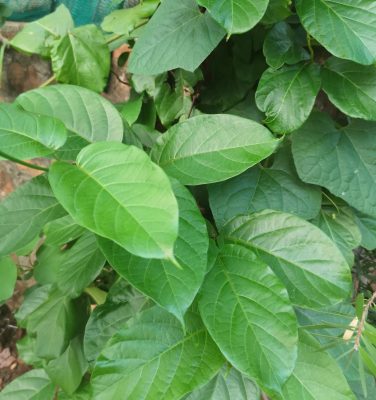
African vanilla (Mondia whitei) is a fast-growing vine that is critically endangered in the wild as it is harvested for food and medicine. The tuberous roots and mature bark contain aromatic compounds related to vanillin (the active ingredient of vanilla) and can be used as a substitute for vanilla.
It propagates easily from seed or cuttings and its domestic growth is being encouraged. This large, but tidy vine has decorative leaves and red/maroon flowers. It needs support and can cover a gazebo, be trained on a trellis or fence or as a green wall. Minimal pruning will keep it in shape.
Plant in deep fertile soil so that the tuberous roots can be harvested non-destructively. Water moderately and feed with a multi-nutrient fertiliser. Being sub-tropical it will die back in cold areas and needs mulching to protect the roots.
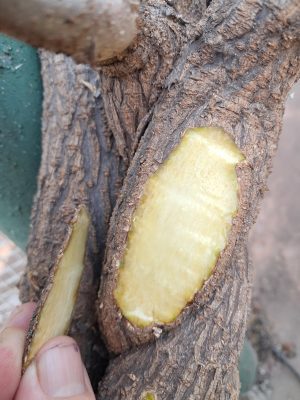
Infuse the tubers and bark in a neutral spirit for drinking and cooking, or dry and place in a grinder. The mineral and vitamin rich leaves can be cooked with butter or olive oil as a substitute for spinach or made into little bundles as substitutes for waterblommetjies in both taste and texture.
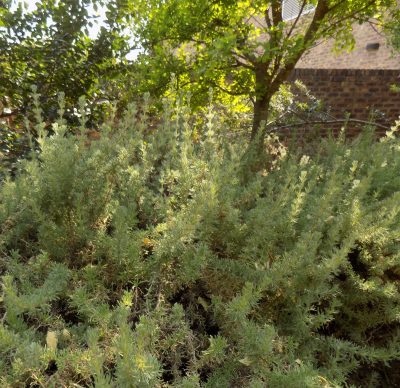
Wild Rosemary (Eriocephalus africanus) is an aromatic, fine-leafed plant that grows in the Karoo giving karoo lamb its distinctive flavour.
It is easy to grow throughout South Africa. Plant in full sun, in fertile soil that drains well and water regularly throughout the year. It is easy to grow, even as a hedge, and produces white flowers.
It can be used instead of traditional rosemary and is especially good as a rub or well crushed in a marinade with garlic, or wild garlic, for mutton.
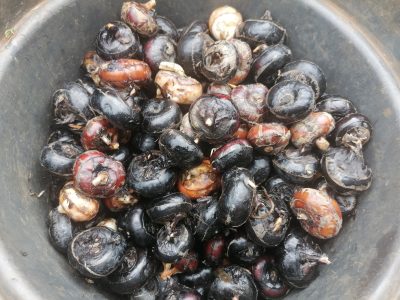
Water chestnut (Eliocharis dulcis) is an aquatic plant that grows wild in KwaZulu-Natal and throughout tropical Africa. The tubers look like chestnuts and are popular in Chinese cuisine. They keep their crunchy texture when cooked.
Grow tubers as soon as you receive them in soil saturated with water in tubs or ponds that receive full sun. They need to “rest” in wet soil and can be 5cm under the surface of the water.
The plant is a small spreading grasslike sedge and the tubers are formed in clusters underneath it. The crop is ready for harvest at the end of the season when the foliage dies down. Harvest as needed.
The chestnuts can be eaten raw, boiled, roasted or stir fried.
- Source: Jason Sampson, Head Curator, Manie van der Schijff Botanical Gardens, University of Pretoria. For more information on these or other orphan crops please email sampson@up.ac.za
- Petal Faire Rare and Unusual plants petalfaire.co.za. Plants can be ordered online and dispatched anywhere in the country. To place an order go to the Petal Faire website, click on “Buy Now” to add your plants of choice to your basket.
Article and images by Alice Coetzee.


